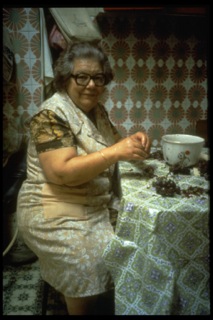Maintaining healthy posture during the activities you are passionate about is SO important. Good form will allow your body to partake in your favorite activities pain-free now and into the future. It often gives the additional benefit of performing better (because of a steadier hand, improved blood flow,...or just increased comfort and relaxation). We've seen a lot of musicians have to stop playing their instrument due to pain, and able to return to playing after learning the Gokhale Method.
A few months ago, I noticed that Nolan was playing guitar with a tucked pelvis and neck forward and I snapped this photo:
Forward head position puts strain on the neck muscles and threatens the cervical


